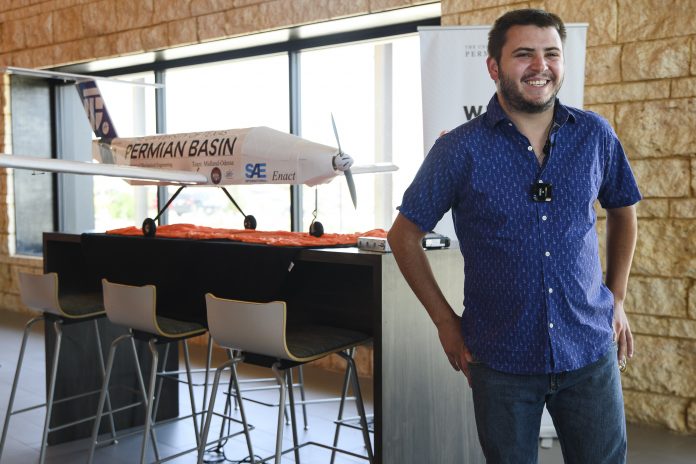
University of Texas Permian Basin’s squad of four engineering students got some bragging rights recently with their eighth-place finish at the Society of Automotive Engineers Aero Design Competition in Fort Worth.
The team of received an award for Best Engineering Design for fast unloading of an aircraft against the clock with a speed of 3.5 seconds, a news release said.
The UTPB Team finished in eighth place overall out of 45 registered international teams. According to SAE officials, no first-time competitor had ever been in the top 10 in the competition’s history, the release said.
Three of the four students have graduated. Ramiro Andujo earned a bachelor’s degree in mechanical engineering; Garrett Martin, a bachelor’s degree in mechanical engineering with a concentration in nuclear engineering; and Arashi Shimizu, a bachelor’s degree in mechanical engineering.
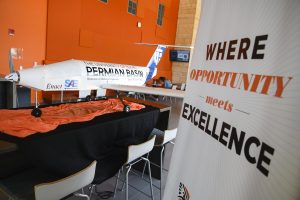
Sophomore Melany Azocar, who is studying mechanical engineering, rounded out the group.
Bibian Ogbuji, assistant research professor, was their faculty advisor and went with them to Fort Worth.
A news conference recognizing their accomplishment was held in the lobby of the UTPB Engineering Building Tuesday.
Martin said he is pretty happy with the results.
“We did better than I could have expected; better than I could have reasonably hoped. I’ve got no problems whatsoever. I’m very proud …,” Martin said.
They didn’t get a plaque, but they do get bragging rights and self satisfaction, he added.
Martin said there were a lot of companies there, primarily Lockheed Martin.
“They were there in pretty high numbers and they were very interested in our plane. …,” Martin said.
He said he had an opportunity to mingle with the other competitors, as well.
“I got a chance to talk with (Texas) A&M. I got a chance to talk with some of the guys from the University of British Columbia and they were all really nice people. I talked to a handful of people from I want to say Brazil. Just generally talking about our design; their design. What would we change if we could do it again? What would they change if they could do it again from the start? Kind of patting each other on the back more than anything,” Martin said.
He added that they didn’t get second looks on the size of their team, even though they were the smallest squad to his knowledge.
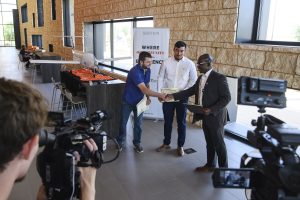
“I think second smallest was six or seven with like three advisors. But we got double takes for how well the plane was constructed; quite a lot. Lockheed Martin came by and said, which one of you guys is the modeler and we kind of pointed at Arashi. And he was like, when’s the last time you did this? And Arashi said high school and he was like you’re lying. … It was absolutely true. We did a good job,” Martin said.
The largest team had 33 students, not including advisors.
He said his first thought about their finish was that no one could ever take that away.
“I had second thought after we talked to some of the SAE board. They’d said we were the first team in the program’s history to be a first-year team and come in top 10. I’m pretty proud of that, too,” Martin said.
He added that while he’s proud of how the team did, he would like to see this inspire future students to challenge the competition.
“It doesn’t matter if you come in dead last. It doesn’t matter if you come in first place. Just come in and do the best you can …,” Martin said.
Andujo said the project stemmed from a senior design project. He added that students don’t necessarily do hands-on construction for those, but they did in this case.
Project sponsors were Midland Development Corp., Air Compressor Solutions, Eastland Oil Company and the College of Engineering.
“… We didn’t originally do it for the competition, but halfway down the line when our professors advised us that we could probably join the competition, that’s what we did. …,” Andujo said.
He added that he enjoyed seeing the project come from concept to reality. Having it do well was a bonus, especially with all the hours they put in.
Andujo said he was originally disappointed that they placed eighth.
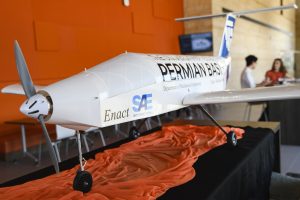
“I thought our plane did better. But after speaking with some of the officials at the event, they actually told us that it was really good. No first-year team has ever (placed in the top 10). After finding that out, I felt a little bit better,” Andujo said.
He is now working for Newton Engineering as a civil engineer and said the plane design experience will come in handy.
The adversity was in the long hours they put in while still handling school work and jobs. Andujo said he put in about 30 hours a week on the plane.
“… I myself work full time, so after work, I would come here until like I said 2 a.m.,” Andujo said.
“… All of that was necessary. All of that was absolutely needed just to get the deadlines met and build it in general. It’s a long process and by far the biggest challenge was just the workload,” he added.
Andujo said he wanted to thank the university and the sponsors for giving the team this opportunity.
“We couldn’t have done it without them. A lot of good has come from this project …,” Andujo said.
Dean of the College of Engineering George Nnanna presented team members present with certificates of achievement.
“We are very proud of the work that this team has performed. This is the first time in history that this competition (took) … place in this institution. We just want to thank them for their dedication and their passion and commitment to the advancement of science and engineering …,” Nnanna said.
Ogbuji was instrumental in the project, as well as the industries that provided funding for the project, he added.
Ogbuji said previously that she was proud of the team, but she was now bursting. She noted how the students put in countless hours and handled a tremendous workload compared to other schools that had more students on their squads.
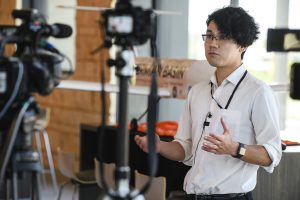
Ogbuji added that she hopes to take another team to competition next year. She still has one student with experience who is returning.
They hoped the plane would survive the trip, but they put the chances at about 50-50, Ogbuji said.
“We were not completely sure that we would come back with the plane. The original design was to do three airplanes; have one for the flight test before we went to the competition and go with two. But due to time constraints, we were able to only design two. We had one flight test, which we did not expect the plane to survive, but it did. And we took this and that to the competition … I was hoping that it would survive, but like I said, we were 50-50,” Ogbuji said.



